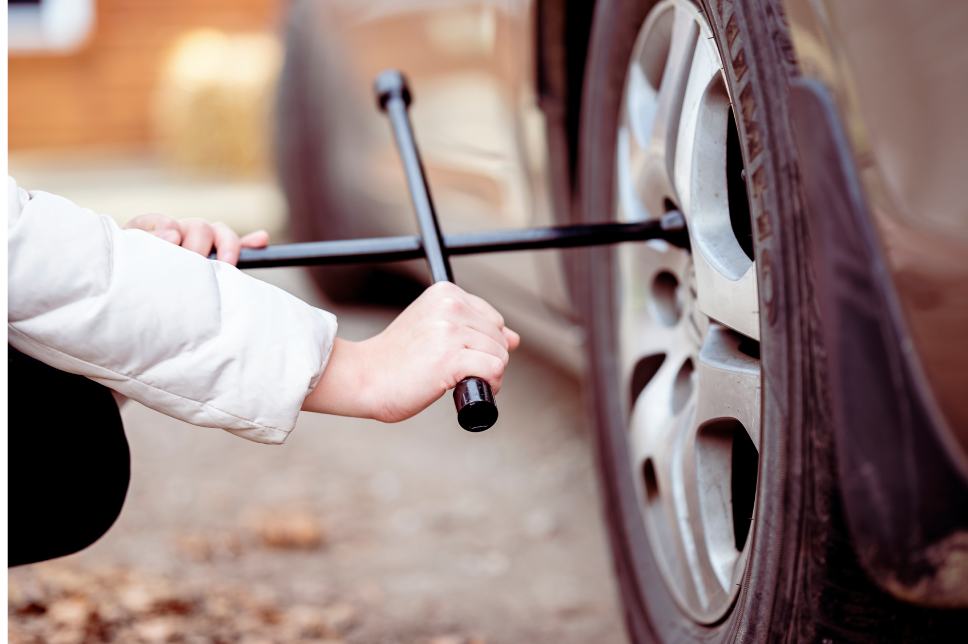
How to Calibrate Your Vehicle’s Tyre Pressure Monitoring System (TPMS): A Comprehensive Guide
Keeping the right tyre pressure is vital for your vehicle’s safety, performance, and fuel efficiency. The Tyre Pressure Monitoring System (TPMS) is key for tracking tyre pressure. It alerts you when the pressure goes below the recommended level. In this guide, we will walk you through the process of calibrating your vehicle’s TPMS, ensuring it operates effectively and safely.
Understanding the Core: What is TPMS and Why It Matters
The Tyre Pressure Monitoring System (TPMS) is a vehicle safety feature designed to alert drivers when tyre pressure is too high or too low. There are two types of TPMS systems:
- Direct TPMS: Uses sensors in each tyre to measure pressure and send data to the vehicle’s system.
- Indirect TPMS: Estimates tyre pressure based on wheel speed sensors. Doesn’t use dedicated sensors within the tyres.
Importance of Proper TPMS Calibration
Proper calibration of your TPMS is crucial for several reasons:
- Safety: Correct tyre pressure gives better handling and reduces braking distances. It also lowers the risk of tyre blowouts.
- Fuel Efficiency: Properly inflated tyres reduce rolling resistance. This can help improve fuel economy.
- Tyre Longevity: Maintaining the right pressure prolongs the life of your tyres. It also reduces the likelihood of premature wear.
Pro Tip: Regularly check your tyre pressure at least once a month and before any long road trips to ensure optimal performance and safety. This simple habit can save you from unexpected tyre issues and improve fuel efficiency.
Quick Guide / Checklist
Before proceeding with the calibration steps, ensure you have everything in place:
- Ensure tyres are inflated to the manufacturer’s recommended pressure.
- Use a reliable tyre pressure gauge to check pressure levels.
- Understand whether your vehicle uses Direct or Indirect TPMS.
- Consult your vehicle’s manual for specific calibration instructions.
- Be ready to drive your vehicle for a short distance if required by your TPMS type.
Important: Temperature changes can impact tyre pressure. So, recalibrate your TPMS when the seasons change or after a big temperature shift. This ensures accurate readings and helps prevent safety risks.
Step-by-Step Guide: How to Calibrate Your TPMS
Step 1: Check Tyre Pressure
Begin by checking the tyre pressure of all four tyres using a reliable tyre pressure gauge. Check the readings against the pressure levels in your vehicle’s manual or on the driver’s side door jamb. Adjust the pressure as needed to ensure they meet the recommended specifications.
Step 2: Reset the TPMS
Most vehicles allow you to reset the TPMS through the onboard computer system. Follow these steps:
- Turn the ignition key to the “ON” position, but do not start the engine.
- Locate the TPMS reset button, usually found beneath the steering wheel or in the glove compartment.
- Press and hold the reset button until the TPMS indicator light blinks three times.
- Start the engine and let it run for about 20 minutes to allow the system to recalibrate.
Step 3: Drive the Vehicle
If your vehicle has Indirect TPMS, drive it for a few miles. You should go at least 30 mph to finish the calibration. This will allow the system to re-learn and adjust to the proper tyre pressure levels.
Step 4: Verify Calibration
Once the above steps are completed, check the TPMS indicator light on your dashboard. If the light remains off, your system is properly calibrated. If it stays on, repeat the calibration process or consult your vehicle’s manual for additional troubleshooting steps.
Secret Tip: For more precision, use a digital tyre pressure gauge. It gives accurate readings, unlike traditional analogue gauges. This helps ensure your TPMS is calibrated correctly.

Important Things to Remember
- Regular Checks: Make it a habit to check your tyre pressure at least once a month and before long trips to ensure it remains within the ideal range.
- Temperature Effects: Be aware that tyre pressure can fluctuate with temperature changes. Always calibrate in a stable environment.
- Battery Life: Check that the sensor batteries for Direct TPMS are working well. This helps prevent false alerts or system issues.

Best Practices & Additional Insights
- Use Accurate Tools: Invest in a high-quality tyre pressure gauge for more accurate readings.
- Professional Help: If you’re confused about calibration or have ongoing problems, talk to a mechanic.
- Monitor Tyre Wear: Uneven tyre wear may signal issues with pressure or alignment, which could affect TPMS accuracy.
FAQs
How often should I calibrate my TPMS?
Calibrate your TPMS when you change or rotate your tyres. Also, do it if the system warns you about a pressure issue. Regular calibration keeps your TPMS accurate. This helps you maintain the best tyre pressure for safety and fuel efficiency.
Can I drive with the TPMS light on?
While you can drive with the TPMS light on, it’s not advisable. The light shows that your tyre pressure might be wrong. This can impact handling, safety, and fuel economy. Check the tyre pressure and recalibrate the system right away. This helps avoid risks.
What should I do if the TPMS light stays on after calibration?
If the TPMS light stays on after calibration, check the tyre pressure. Make sure it matches the manufacturer’s recommended level. If the tyre pressure is correct, reset the TPMS again. If the light stays on, the TPMS sensors might be faulty. You should see a professional mechanic for a check-up.
Can I reset the TPMS without a scan tool?
In many vehicles, you can reset the TPMS manually without needing a scan tool. Check your vehicle’s owner’s manual for the reset steps. Usually, you need to press a reset button or drive for a short time at a steady speed. However, some vehicles may require a professional tool for resetting.
How can I tell if my TPMS is malfunctioning?
The signs of a faulty TPMS include:
- The TPMS light stays on after calibration.
- Pressure readings are erratic.
- Alerts are inconsistent.
If you have any of these problems, it’s smart to get your TPMS system checked by a pro. This helps prevent false warnings and ensures you don’t miss real tyre pressure issues.
Final Thoughts: Ensuring Optimal TPMS Performance for Safety and Efficiency
In conclusion, adjusting your vehicle’s Tyre Pressure Monitoring System (TPMS) is crucial. It affects your safety, comfort while driving, and fuel efficiency. Follow the easy steps in this guide to calibrate and check your TPMS. This will help you avoid risks like tyre blowouts and poor handling. Regular checks and recalibration are key to keeping your vehicle in great shape. They also help extend the life of your tyres.
Taking care of your TPMS boosts your safety and improves your vehicle’s performance. Don’t wait for a warning light to remind you. Check your tyre pressure and calibrate your TPMS as a regular habit. For more expert tips and advice on vehicle maintenance, be sure to explore additional resources. Stay safe, maintain your tyres, and drive smart!